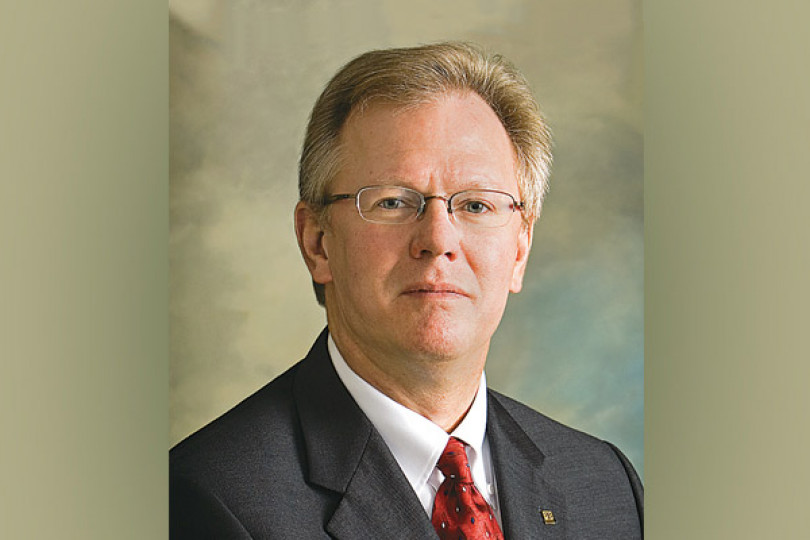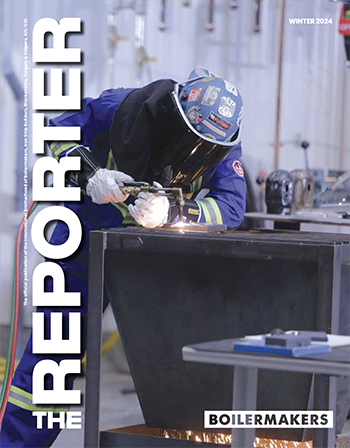Milestones mark progress, but tragedies loom large
WE ARE AN ORGANIZATION that places a high value on the safety and health of our members. This is evident both in our Construction Sector and our Industrial Sector, whether our lodges are bringing in a complex job without a single recordable injury or winning awards for working safely in plants, shops, and shipyards. It is evident as well in our commitment to the MOST safety training programs, our apprentice training efforts, and the work of our health and safety directors in Canada and the United States.
We have made tremendous progress over the decades in building a culture of safety. In this endeavor, we are often — although not always — working in cooperation with our contractors and employers who understand, as we do, that putting safety first is not only the morally right thing to do; it is also the smartest and most productive use of our most precious resource.
To be really effective, progress must be measurable. Since 1990, the National Association of Construction Boilermaker Employers (NACBE) has tracked the safety performance of our local lodges and participating contractors annually, recording lost-time injuries, compensable injuries, and OSHA-recordable injuries. We have seen injuries in all three areas decline steadily over the years.
At this year’s construction conference, we heard from NACBE Executive Director John Erickson that in 2009 38 lodges recorded zero lost-time injuries and 12 recorded zero compensable injuries. Those are incredible achievements, particularly in the field construction industry with its inherent hazards. Erickson also reported a new milestone: an all-time-low lost-time injury rate of 0.39 per 200,000 man-hours worked, down from 13.54 when the safety index was first begun.
“Organized labor has done more to promote the safety of all workers — union and nonunion — than any other group.”
We can also be proud of the great safety work being done in our Industrial Sector. Two stories in this issue of the Reporter highlight several awards our members received recently. Local 66 (Little Rock, Ark.) member Willie Sandoval Jr. was recently honored with Union Pacific’s Kenefick Safety Award for 2009 for his outstanding on-the-job safety achievements at the company’s Fort Worth, Texas, locomotive shop. And Local D66 members in Fort Dodge, Iowa, won the 2008 Sentinels of Safety award for working 10 years without a single lost workday injury. Presented by the National Mining Association and the U.S. Mine Safety and Health Administration (MSHA), it was the first such award for their employer, National Gypsum Co.
These are but a few examples of how our members embrace safety programs and demonstrate their commitment to protecting themselves and each other on the job.
Accidents still harm our members
WHILE WE CELEBRATE our steady progress in safety and health, we know that danger is never far away, and serious injuries and fatalities continue to occur. Since April of last year, our union has lost seven of its brothers to workplace accidents, including two this past May. Each death has been a shock and a tragedy — for families, friends, fellow members, and our entire Brotherhood.
“A lost-time injury rate of 0.39 per 200,000 man-hours is the lowest rate ever for the Boilermakers.”
To help families and local lodges cope with catastrophic events that result in death and major injuries, our union has established a relationship with the law firm of Becker, Schroader, and Chapman. This firm maintains a special emergency response team (SERT) to investigate catastrophic accidents, preserve evidence, and advise families and lodges on legal matters. There is no charge to families or lodges for these services. More information about SERT is available through Mark Garrett, Director of Health and Safety Services, (225) 276-6796.
Whether an injury or fatality is caused by defective equipment, a momentary mental lapse, poor job site safety practices, or outright negligence, the fact is that incidents are preventable. Someone or something did not perform as intended. With the right training, the right policies and practices, and the right mindset by workers and employers, accidents need not happen.
To some, safety is a low priority
IT IS AN UNFORTUNATE reality that some organizations — often those that are the most vehemently antiunion — place profit ahead of the safety of their workers. A recent example is Massey Energy, the largest coal company in Central Appalachia, and a fiercely antiunion company.
When Massey’s Upper Big Branch coal mine in West Virginia blew up in April, killing 29 miners, the media revealed that the company had compiled a horrendous safety record. The Washington Post reported that MSHA had cited the mine for over 3,000 violations, including 638 since 2009. Between January 2009 and April 2010, the agency ordered the Upper Big Branch mine evacuated 64 times. The newspaper added that the mine’s record for “significant and substantial” violations is more than 11 times the national average.
Yet, thanks to a loophole in the law that allows companies to continue operating mines while appealing serious infractions, Massey kept the Upper Big Branch going, the Post noted.
Without a union, the miners in the Upper Big Branch had few protections. Some testified before Congress that they were intimidated by supervisors and prevented from talking with MSHA investigators.
Some observers argue that with a law on the books like the Employee Free Choice Act (which is still pending in Congress), these miners might have successfully organized. And the 29 who died might still be going home to their families.
Health and safety laws must be strengthened
WHAT HAPPENED AT the Upper Big Branch mine illustrates how laws that are intended to protect workers can sometimes be circumvented — or simply lack the necessary enforcement tools. We see this not only in the mining industry but also in occupations covered under the Occupational Safety and Health Act (OSH Act) of 1970, which created OSHA.
That is why the Boilermakers have joined with the AFL-CIO to support the Protect America’s Workers Act, which would strengthen the OSH Act. This is one of the issues our delegates presented to their lawmakers while lobbying during the Legislative Education Action Program conference in late April. If enacted, the legislation would increase civil and criminal penalties for job safety violations. It would enhance whistleblower protections for workers who raise job safety concerns and report injuries or illnesses. It would require the employer to correct hazards even while appeals are pending. And it would provide OSHA protections to state and local public sector workers and to others who lack full coverage under the act.
Many of these same provisions are needed in the mining industry health and safety laws as well.
Unions lead the way in safety
ORGANIZED LABOR has done more to promote the safety of all workers — union and nonunion — than any other group. We have been the watchdogs and the activists that clamor for better laws and broader participation from employers. By commemorating Workers Memorial Day each April 28, we acknowledge the price that workers have paid over the years — and continue to pay. Fourteen workers are killed on the job each day in the United States; hundreds more die from workplace-related illnesses.
These are appalling numbers, especially for a society as advanced and as wealthy as ours.
Our Brotherhood has made great strides in building a culture of safety throughout our organization, and we will continue that effort going forward.
But all workers deserve a high level of protection on the job. Achieving that goal will require a national commitment to change and the cooperation and support of employers throughout our society.






